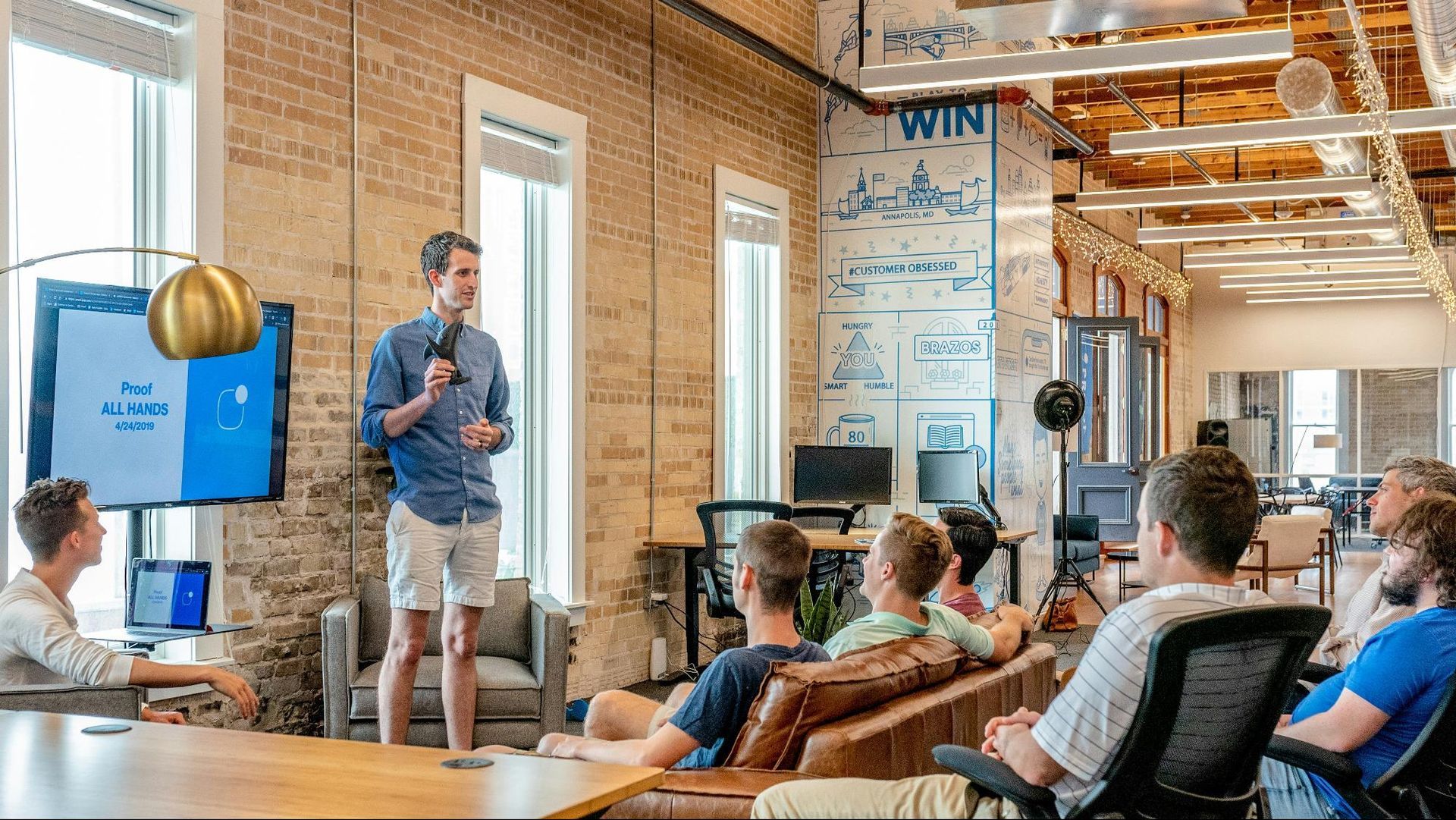Driving Success with Creative Expression in Leadership
Can leadership and creativity coexist in the business world? Many believe that driving success with creative expression in leadership not only can but should be a priority. This article explores how blending leadership skills with creative expression can drive innovation and foster a collaborative culture.
We'll examine strategies for leaders to cultivate creativity, overcome barriers, and measure the impact on business outcomes. By the end, you'll have practical insights to develop your own plan for merging leadership and creative expression, potentially transforming your approach to problem-solving and team management.
KEY TAKEAWAYS
- Creative leadership fosters innovation by encouraging risk-taking and diverse perspectives
- Effective leaders blend analytical skills with inspiration to drive organizational success
- Measuring creative leadership impact involves tracking employee engagement and market responses to innovative products
- Networking with innovative leaders provides valuable insights and inspiration for personal growth
- Continuous learning and feedback are essential for developing creative leadership skills

Understanding the Connection Between Leadership and Creative Expression
Leadership in the modern workplace requires creativity and problem-solving skills. Effective leaders act as role models, blending artistic vision with engineering precision to drive innovation. This approach enhances job satisfaction and fosters a culture of creative expression. The following sections explore how leadership and creativity intersect to achieve innovative success in today's dynamic business environment.
Defining Leadership in the Modern Workplace
Driving success with creative expression in leadership requires a blend of strategic thinking and creative problem-solving. Effective leaders develop innovative strategies based on research and analytics, fostering a culture of continuous improvement and adaptability.
They focus on teamwork, encouraging collaboration and diverse perspectives to drive organizational success. In today's rapidly changing environments, leaders must navigate complex challenges by employing data-driven decision-making while nurturing creativity and innovation within their teams.
Successful leadership balances analytical skills with the ability to inspire, creating an environment where new ideas flourish, collaboration thrives, and teams achieve their full potential through continuous improvement and innovation.
The Role of Creativity in Problem-Solving
Driving success with creative expression in leadership plays a vital role in problem-solving within organizations, fostering innovative solutions that enhance customer confidence and employee engagement. Leaders who encourage creative thinking empower their teams to approach challenges from fresh perspectives, leading to more effective and efficient problem resolution.
By integrating creativity into problem-solving processes, organizations can adapt to changing market conditions and societal needs more readily. This approach not only improves operational efficiency but also boosts employee morale and overall organizational success by increasing customer satisfaction, enhancing employee engagement, improving organizational adaptability, and positively contributing to societal impact through innovative solutions.
How Innovative Success Stems From Creative Leadership
Creative leadership fosters innovative success by encouraging a competitive yet collaborative environment. Leaders who practice servant leadership inspire their teams to think outside the box, resulting in groundbreaking solutions. This approach reinforces a culture of innovation, where employees feel empowered to contribute their ideas and take calculated risks.
Successful creative leaders recognize that happiness and intelligence go hand in hand in driving innovation. By creating a positive work environment that values creativity, leaders tap into their team's collective intelligence. This approach leads to enhanced problem-solving capabilities and a continuous stream of innovative ideas that keep organizations ahead in today's rapidly evolving market.
The Benefits of Merging Leadership Skills With Creative Practices
Merging leadership skills with creative practices yields significant benefits for organizations. This section explores how creative approaches enhance team collaboration, foster innovation, and drive success. It examines case studies of effective creative leaders, highlighting the impact on organizational behavior, human resources, and market performance. Nonverbal communication and new concepts play key roles in this blended approach to leadership.
Enhancing Team Collaboration Through Creative Approaches
Creative approaches to team collaboration enhance leadership effectiveness and foster innovation. By adopting a leadership style that encourages open communication and idea-sharing, leaders become facilitators of creativity within their teams. This approach creates a space where team members feel comfortable expressing their ideas and taking calculated risks.
Research from Harvard Business School suggests that creative collaboration leads to better problem-solving and increased productivity. Leaders who implement creative techniques, such as brainstorming sessions and design thinking workshops, often see improved team dynamics and more innovative solutions. These methods help break down silos and encourage cross-functional cooperation, ultimately driving organizational success.
Fostering an Innovative Culture Within Organizations
Driving success with creative expression in leadership requires fostering an innovative culture where creative thought and courage are valued. By encouraging employees to share their ideas openly, leaders create a workplace that thrives on knowledge exchange and continuous learning. This approach empowers team members to take calculated risks and explore new solutions, ultimately driving innovation and growth.
Successful leaders recognize that innovation stems from a diverse pool of ideas and perspectives. They promote cross-functional collaboration and create opportunities for employees to contribute their unique knowledge and skills. This inclusive approach enhances workplace creativity, boosts employee engagement, and increases satisfaction by encouraging open communication, supporting risk-taking, promoting diverse perspectives, and valuing continuous learning.
Techniques to Open Communication Channels
Authors can employ various techniques to open communication channels with their book's spirit, such as meditation, guided visualization, and journaling to quiet the mind and invite insights from spirit guides. Some writers create a podcast or newsletter focused on their book's themes, attracting like-minded individuals and amplifying the energy surrounding their work. Maintaining good mental health is crucial, with self-care practices like exercise, proper sleep, and healthy eating supporting a clear mindset. Joining writing groups or attending workshops exploring creativity and spirituality can also be beneficial. Techniques include daily meditation, keeping a dream journal, engaging in automatic writing, creating a vision board, and participating in group readings.
Interpreting Messages Received From Your Book
Authors can use techniques like meditation, guided visualization, and journaling to connect with their book's spirit. Creating a podcast or newsletter focused on the book's themes can attract like-minded individuals and amplify the book's energy. Maintaining good mental health with self-care practices like exercise, proper sleep, and healthy eating is crucial. Joining writing groups or workshops that explore creativity and spirituality can also help. Key techniques include daily meditation, dream journaling, automatic writing, vision boards, and participating in group readings.

Overcoming Barriers to Creativity in Leadership Roles
Leaders face various obstacles to creativity in their roles. This section explores common barriers, techniques to break free from conventional leadership styles, and methods for building resilient teams. It examines how humility, technology, trust, and mentorship can foster creativity. The role of college education in developing adaptable leaders is also discussed.
Identifying Common Obstacles to Creative Thinking
Driving success with creative expression in leadership often requires overcoming obstacles to creative thinking, such as rigid organizational structures and fear of failure. Effective leadership demands a scientific approach to identifying these barriers, combining training in creative problem-solving with a philosophy that values innovation.
By investing in programs that challenge conventional thinking, leaders can foster a more creative and dynamic work environment. Common obstacles include time constraints, lack of resources, and resistance to change. Overcoming these barriers requires a strategic investment in personal development and team training.
Leaders who prioritize creativity as a core philosophy often find more effective solutions to complex problems by allocating dedicated time for creative thinking, optimizing resources, cultivating a culture that embraces new ideas, encouraging calculated risk-taking, and promoting cross-functional collaboration.
Techniques to Break Free From Conventional Leadership Styles
Driving success with creative expression in leadership requires leaders to break free from conventional styles by embracing risk and fostering innovation. By encouraging team members to challenge established norms, leaders create an environment where creative problem-solving thrives.
This approach also requires developing soft skills such as active listening and empathy, which enhance conflict resolution and promote a culture of open communication. Shifting the perception of leadership roles is crucial for breaking conventional molds.
Leaders who view themselves as facilitators rather than directors empower their teams to take ownership of projects and contribute innovative ideas. This mindset leads to more dynamic and adaptable organizations that are better equipped to navigate complex challenges and drive sustainable growth.
Building Resilience and Adaptability in Teams
Driving success with creative expression in leadership involves building resilience and adaptability in teams by leveraging education as a powerful tool. By providing ongoing learning opportunities, leaders equip their teams with the language and skills needed to navigate challenges effectively.
This approach fosters a culture of continuous improvement, enabling teams to adapt to changing circumstances and overcome creative barriers. Leadership experts emphasize the importance of creating a supportive environment where team members feel empowered to take risks and learn from failures.
Encouraging open communication, fostering collaboration, promoting risk-taking, and empowering team members to adapt to change not only enhances creativity but also improves overall team performance and innovation.

Conclusion
Blending leadership with creative expression is essential for driving success with creative expression in leadership in today's dynamic business environment. By fostering a culture that encourages risk-taking, open communication, and diverse perspectives, leaders can unlock their team's full creative potential and solve complex problems more effectively.
Implementing strategies such as brainstorming sessions, creative workshops, and continuous learning opportunities empowers employees to contribute innovative ideas and adapt to changing market conditions.
Ultimately, leaders who successfully merge their leadership skills with creative practices not only enhance team collaboration and organizational performance but also position their companies at the forefront of innovation in their respective industries.












